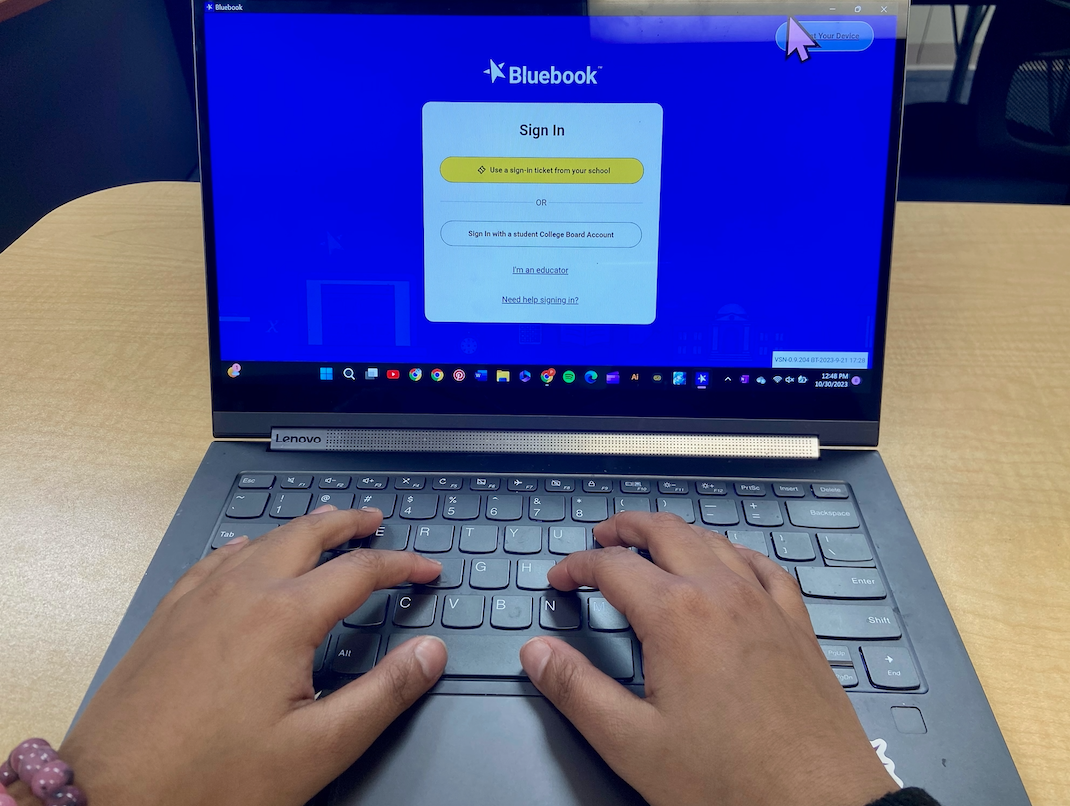As the world evolves into an increasingly digital age, many activities traditionally done on paper have switched over to online methods, and the PSAT is the most recent addition.
At Holy Trinity, the PSAT is administered to grades 9-11 and is the qualifying test for the National Merit Scholarship. Traditionally, the test was given on paper and lasted around two and a half hours. Beginning this year, the College Board decided to go entirely paperless and distribute the test online. Substitute and testing coordinator Stephanie Taylor oversees the PSAT test-taking process here at Holy Trinity.
“For what I do in my role, it was significantly easier to do it digitally,” Taylor said. “When we were doing paper versions, I had to adhere sticky labels to each answer sheet with the students’ names and information, alphabetize them, separate them by room, and do the same thing with all of the test booklets.”
From an administrative perspective, the online version requires significantly less preparation before and after students take the test. “There was a lot more work involved with the paper version,” Taylor said. “But with the digital, after the test was completed and everybody had submitted their answers, there was nothing else to do.”
Similarly, for many students, this transition positively impacted their test-taking experience.
“I thought that some of the questions were easier than past years and that it was easier to process because of the different tools and the shorter amount of questions,” sophomore Ella Shepherd said.
With this transition, the scoring system has remained the same while the style of the test has changed.
“The paper test was what you call a linear test where you took the test in the order given to you,” Taylor said. “The digital test was not linear in that the digital had two modules within each of the sections. Depending on how you did in the first section, it would direct you to the next section with either slightly easier or slightly more difficult questions.”
The PSAT scores will be administered 2-4 weeks faster than in previous years and will be available on November 6.







